Cultivating citizens who will make an impact
Interested in the field of transportation? Get to know some of our alums to see how their experiences at the Transportation Research Center led them to their careers today. Our alumni have gone on to become professors, transportation planners, research managers, and more.
Geoffrey Battista, Ph.D.
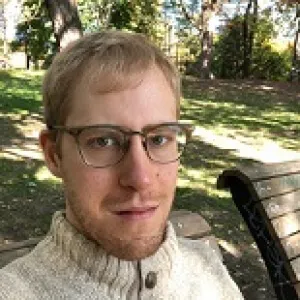
Current Role: Special Investigator, Vermont State Auditor's Office
TRC Role: M.S. in Community Development and Applied Economics (2014)
What have you been doing since leaving the TRC?
It’s been a whirlwind! In August 2014, I migrated north of the border to begin a doctorate in geography at McGill University. My dissertation, titled Incorporating Social Space into Pedestrian Planning, sought to reconfigure urban planning procedures and instruments to better register issues facing “captive” pedestrians, i.e., those whose walking behavior depends on socioeconomic disadvantage rather than the attractiveness of the walking environment.
My supervisor and I acquired funding from the Social Sciences and Humanities Research Council of Canada to conduct several dozen hours of interviews, both sedentary and video-recorded walking versions, in a low-income neighborhood in Montreal. I organized the multimedia data in a qualitative geographic information system (QualGIS) to illuminate how built and social factors interact to shape walkability. I juggled a couple other projects too: (a) investigating how transportation planners negotiate their professional expertise with public feedback; (b) evaluating social inclusion measures taken in Canadian municipal pedestrians plans, and; (c) assessing how professors might teach QualGIS in the classroom, given its advantages for analyzing complex urban issues. Amid all these projects, I attended many conferences, assistant-taught many courses, and even coordinated marketing research for the university’s teaching assistant union.
Leaving McGill, I had the opportunity to join the Pembina Institute, Canada’s leading clean energy think tank, as a senior analyst at their Toronto office. I tackled a number of projects centered on reducing greenhouse gas emissions in transportation. This included working with developers to promote transit-oriented housing, working with freight industry leaders to design low-carbon solutions to last-mile and long-haul logistics, and policy analyses for multiple levels of government. This was a great learning experience, and now I am back in Vermont conducting special projects for the State Auditor, Doug Hoffer.
How did the TRC prepare you for these positions, and life in general?
The TRC’s lectures and events gave me insight on how transportation systems really work. Jumping from, say, New Urbanist developers in South Burlington one day to climate change resilience the next prepared me to address complex mobility challenges at multiple scales. I was also fortunate enough to have research funded through the TRC. The fellowship paid for many long car rides to meet stakeholders across the state and, once the results came together, to disseminate my findings at a conference or two. I could not have gone on to my doctorate without these experiences, and I remain thankful for them to this day.
The UVM TRB, whether through lectures or office discussions, also nudged me toward sustainable commuting. I now make a point of living near transit and purchasing nice boots and jackets for all-season walking. Why? Transit is cheaper than a car, yields physical activity gains from walking to stops, and promotes clean and vibrant communities through transit-oriented development. The academic literature also says dog ownership improves physical activity outcomes, presumably from walking the dog, so I’ll use that as an excuse for a pet in the next year or two.
What would you recommend to current researchers at the TRC?
I’d strongly recommend digging into unfamiliar methods: if you’re a geospatial modeller, learn to interview stakeholders; if you’re a community advocate, learn how to read technical reports and literature reviews. My methodological fluency has opened doors in academic funding and job opportunities that would not have been possible otherwise.
I’d also advise researchers to venture outside the transposphere as they conduct their work. I’ve found that public health researchers, housing advocates, and even business/labor interests can provide higher resolution insights on certain transportation issues than the civil engineers and planners who “run the show” at major transportation conferences. It’s also great to tap the pulse on the news media and weekly periodicals. They keep me up to date on new mobility services and government budgets, and it’s always nice to have topics ready for the office water cooler.
Chester Harvey, M.S.
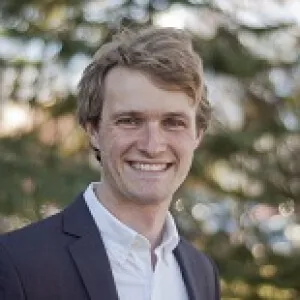
Current Role: Ph.D. Student, Department of City and Regional Planning, UC Berkeley; Data Scientist, Alta Planning and Design
TRC Role: M.S. in Natural Resources (2014), Graduate Research Assistant (2012-2014), Research Specialist (2014-2016)
What have you been doing since leaving the TRC?
After finishing my Master’s Degree, I was torn about whether to continue in academia or pursue a more practice-oriented career in transportation planning. Initially, I worked for the TRC as a Research Specialist, primarily on a project related to long distance travel behavior. This allowed me to hone my research skills by writing a handful of journal articles and reports in collaboration with Dr. Lisa Aultman-Hall, Jim Sullivan, and partners at Auburn University. Despite having completed only a Master’s Degree, the position was similar to a post-doc, allowing me to build my CV and become familiar with the ins and outs of being a professional academic. Meanwhile, I also published several journal articles based on chapters from my master’s thesis, developing an independent line of research that would become foundational for my Ph.D. applications and dissertation.
I also still had an itch to work in practice-oriented planning and took a job in the Analytics group at Alta Planning and Design, a small firm focusing on active transportation. The Alta team is composed primarily of planners, landscape architects, and engineers with professional degrees and backgrounds, so my role was to bring a connection to cutting edge theories and methods from academia. Now that I am back in school, I continue to work with Alta part time. This connection to practice is invaluable for making sure that my research addresses real world issues.
I am now in my third year as a Ph.D. student at UC Berkeley, where I study how microscale built environments around streets influence travel behavior, particularly among active users such as pedestrians and cyclists. The road to a Ph.D. is sometimes frustratingly long — I am just now transitioning from coursework into my dissertation — but it’s a remarkable opportunity to dig deeply into a hyper-specific topic while also discovering an almost endless chain of interdisciplinary connections. I still haven’t decided which aspect I like better.
How did the TRC prepare you for these positions, and life in general?
My favorite aspect of the TRC was that it gave me, as a Master’s student, opportunities to engage with real research, even starting my own line of work, with solid financial support and excellent faculty mentorship. Colleagues at Berkeley, where master’s students don’t have nearly this level of support, have a hard time believing that I accomplished the kind of work I did at the TRC. I think this research experience, including presenting at conferences and writing and defending a dissertation-like thesis, gave me a substantial leg up in applying for both jobs and Ph.D. programs.
What would you recommend to current researchers at the TRC?
Take advantage of opportunities for interaction and collaboration with faculty at the TRC and around the University. As a UVM student, I too often took the accessibility of faculty for granted. Professors had the bandwidth to offer extra help with coursework, thesis research, or even side projects. Small classes and research seminars provided lots of face time with faculty from all different disciplines. Many faculty at Berkeley, by contrast, schedule office hours months in advance and in 20 minute slots. Few people seem to have time to attend seminars or develop informal collegial relationships. Ph.D. students get the most attention (so I’m glad I am one!), but master’s students and undergraduates are small fish swimming in a big pond. I’m so glad I did my Master’s at a smaller and more personal school. The TRC added yet another layer of community in which I developed close relationships with faculty, researchers, and other students. Those connections continue to be some of my best collaborative resources.
Russel Mills, Ph.D
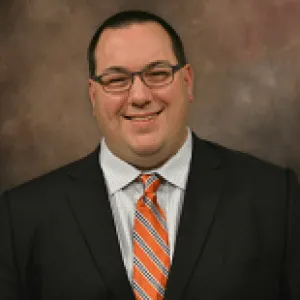
Current Role: Senior Manager of Aviation Research and Economics at Crawford, Murphy and Tilly, Inc.
TRC Role: Master of Public Administration (2007). I was in the initial group of TRC graduate students in 2006-2007.
What have you been doing since leaving the TRC?
After graduating from UVM with my MPA, I did what students often do when they don’t quite know what career pathway speaks to them – I pursued a Ph.D.! I attended the Ph.D. program in Political Science at Kent State University in Ohio from 2007-2011. My training in the MPA program and TRC prepared me exceptionally well for the independent research skills necessary to succeed as a Ph.D. student. While at Kent, I built upon my research on aviation policy that was the foundation of my Master’s thesis completed as a graduate student at the TRC. For my dissertation, I explored the use of voluntary safety reporting programs by the Federal Aviation Administration (FAA) to ensure compliance with safety regulations by air carriers. This research fit squarely with my unique bridging of the fields of aviation and public administration and resulted in a successful grant application to the IBM Center for the Business of Government to support my research.
During my dissertation research, I was spending quite a bit of time with FAA and airline officials as I conduced interviews and participant observations. While I was on the job market interviewing for several tenure-track academic positions, I noticed a job opening as a policy analyst with a focus on legislative affairs with the FAA. I was lucky enough to receive an offer from the FAA in December of 2010. I vividly remember the 2010 holiday season as a somewhat stressful one choosing between the position at the FAA, two tenure track academic positions, and a director of safety reporting programs with US Airways. As a transportation (and political science) geek, there was no way I could turn down working for the FAA in Washington, DC. During my time at the FAA, I developed and evaluated agency-wide legislative proposals for political and policy implications and coordinated with internal and external stakeholders to ensure communication of proposals to the Department of Transportation (DOT), Office of Management and Budget (OMB), and Congress. This was a very interesting and active position as it often forced me to quickly learn about complex aviation policy problems and develop a course of action to propose to senior executives in the agency. I routinely interacted with legislative staff, trade association representatives, and senior executives from FAA, DOT, and other federal agencies. While I absolutely loved my position at the FAA, I remained very attracted to academia and conducting independent research on several aviation and political science issues which I was able to observe from my position at FAA.
In 2012, I accepted a position as an Assistant Professor in the Department of Political Science at Bowling Green State University (BGSU). I was attracted to BGSU because of the ability to teach in their MPA program as well as the University's aviation program. While I was at FAA, I kept a notebook of all of the potential research topics and interesting things I observed. When I arrived at BGSU, I hit the ground running on several of these topics, which resulted in several publications in a variety of journals including Legislative Studies Quarterly, The Journal of Public Policy, Public Administration Review, Administration and Society, Regulation and Governance, The Journal of Benefit-Cost Analysis, and the Journal of Air Transport Management. I also developed a significant interest and expertise in air service and economic development and was awarded a grant by the Airport Cooperative Research Program (ACRP) to examine the impact of airline industry changes on air service in small communities. After being promoted to Associate Professor in 2016, I began becoming more involved in our Center for Regional Development (CRD) at BGSU, which is an interdisciplinary applied research and technical assistance center. In 2016, we were awarded a 5-year grant from the Economic Development Administration (EDA) to conduct applied research and assist local communities on economic development projects and planning in 29 counties in northwest Ohio. In May 2018, I became Director of CRD and lead a team of 7 professional staff and graduate students dedicated to improving the economic and social well-being of people in our community. I have also remained very active in the air service development world. I served on a DOT Working Group on Small Community Air Service and was awarded another ACRP grant to examine the use of airport and community incentives to attract new air service. Additionally, CRD has partnered with a consulting firm, Crawford, Murphy, and Tilly (CMT) to provide air service development consulting services to airports across the country. In mid-June 2019, I will be joining the aviation team at Crawford, Murphy and Tilly, Inc. as the Senior Manager of Aviation Research and and Economics. Lastly, I am the current Vice-President and Advocacy Chair of the Ohio Aviation Association, an association of over 350 members from over 55 airports in the state of Ohio.
How did the TRC prepare you for these positions, and life in general?
My time at the TRC was instrumental in preparing me for my career not only as a transportation official, but also as an academic. The transportation seminar I took at the TRC prepared me well for conversations I had while at FAA about the multi-modal nature of many transportation problems. I also had the opportunity to spend time with excellent researchers, teachers, and mentors such as Lisa Aultman-Hall, Glenn McRae, Richard Watts, and Chris Koliba who shaped my professional development and taught me how to conduct academic research. Finally, the seminars, guest speakers, and networking were invaluable resources that assisted me greatly in my career.
What would you recommend to current researchers at the TRC?
While at UVM, I truly did not appreciate how lucky I was to have such engaged faculty members who were willing to spend considerable time mentoring and teaching me how to be an academic researcher. I would encourage current students to take advantage of the small program and cohort feel of the UVM program. Additionally, I would strongly recommend trying to become a “liberal arts” transportation researcher by taking classes in other disciplines and honing your writing and communication skills. I am amazed how many people I meet in aviation and other transportation areas who started in a different field (even something as crazy as political science!). Finally, be an engaged volunteer and member of professional organizations such as TRB.
Peter Pettengill, Ph.D
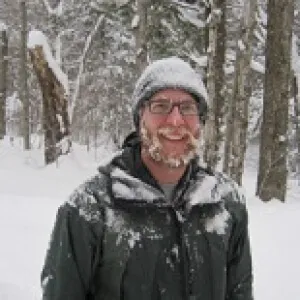
Current Role: Assistant Professor of Environmental Studies, St. Lawrence University
TRC Role: Ph.D. in Natural Resources (2013)
What have you been doing since leaving the TRC?
My first position after leaving the TRC was as an outdoor recreation planner at Grand Canyon National Park. Employed by the National Park Service, I served as a subject matter expert on human dimensions of backcountry and wilderness planning. This involved analyzing environmental impacts based on visitor use levels and patterns in backcountry and wilderness settings. My analysis helped inform documents required by the National Environmental Policy Act, such as environmental impact statements. After applying my skills as a practitioner, I chose to return to academia.
In 2015, I accepted a position as an Assistant Professor of Environmental Studies at St. Lawrence University. Since my arrival at SLU, I have developed and taught multiple courses including Introduction to Environmental Studies, Contemporary Issues in Outdoor Recreation and Public Land, Recreation Policy and Planning, and Recreation Research. I have found passing on my knowledge of park and recreation management to the next generation of public land stewards incredibly rewarding.
How did the TRC prepare you for these positions, and life in general?
The TRC’s emphasis on interdisciplinary solutions to real world problems prepared me for my professional career. Because my research was funded in part by a TRC research fellowship, I took classes and collaborated with researchers across disciplines. Together we studied core content, but perhaps more importantly, we learned how to effectively communicate our individual expertise to each other. This skill served me well on the planning team I was a part of at Grand Canyon and is inherently required as an educator at a liberal arts college.
What would you recommend to current researchers at the TRC?
Be a sponge, but don’t just soak up knowledge from your own field. Seek connections and interrelationships across disciplines. More importantly, be able to effectively communicate them to peers within your field, professionals outside your field, and the general public.
Xiao Xiao, Ph.D.
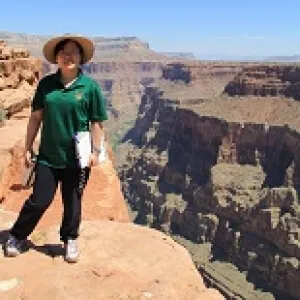
Current Role: Assistant Professor, School of Community Resources and Development, Arizona State University/Hainan University-Arizona State University Joint International Tourism College, Hainan University
TRC Role: Ph.D. in Natural Resources (2016)
What have you been doing since leaving the TRC?
After I received my Ph.D. from the University of Vermont in October 2016, I migrated to South Carolina and began my postdoc research in the Department of Geography at the University of South Carolina. My postdoc research focused on the social dimension of climate change, and sought to examine visitors’ perceptions of climate change and coping behaviors. Starting on December 2017, I moved to North Carolina, and worked as postdoc associate in the Department of Parks, Recreation, and Tourism Management at North Carolina State University. I participated in the research project entitled “Assessing the transferability of a historic resources decision support model for optimized budget allocation and adaptation planning.” Our research team sought to build an optimization model to help National Park Service evaluate the decisions, trade-offs, and consequences of different climate adaptation planning budget scenarios.
Recently, I joined in the School of Community Resources and Development at Arizona State University as an assistant professor for the international partnership program: Hainan University - Arizona State University Joint International Tourism College. My current research focuses on transportation management in parks and protected areas, and climate change adaptation of cultural resources in parks and recreation areas, and sustainable tourism planning.
How did the TRC prepare you for these positions, and life in general?
The TRC’s lectures and events gave me insight on sustainable transportation management in parks and recreation areas. I took many TRC courses such as Critical Issues in Transportation, Travel, Safety and Human Factors, and Land Use Policy and Economics, which offered me comprehensive knowledge of transportation system and management. I was also very fortunate to be supported as a TRC graduate scholar during my Ph.D., which helped me build my dissertation research, entitled “The Role of Transportation in Expanding the Democratic Ideal of National Parks.” The assistantship provided by TRC helped me disseminate my research findings, including top-tier peer-reviewed journal articles and conference presentations. Moreover, the faculty and staff in TRC, especially Dr. Lisa Aultman-Hall and Glenn McRae, provided me with professional suggestions and support for my academic career path.
What would you recommend to current researchers at the TRC?
I’d strongly recommend using interdisciplinary knowledge and thinking to conduct research. For example, as a park researcher, I always keep searching for methods from other disciplines, including transportation and geography. I also like digging into unfamiliar methods such as programming and optimization modeling, which expands my research areas and improves my research capacity. Finally, I strongly encourage attending conferences to build networks, which will has kept me up to date on the newest research and facilitates partnerships with different researchers.